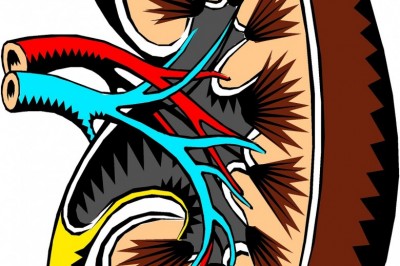High Blood Pressure - An Analogy of The Cardiovascular System
The cardiovascular system essentially consists of the heart, a network of hollow blood vessels (called arteries, veins and capillaries) and the blood that fills them.
In simplistic terms, the cardiovascular system conveys food and oxygen to every one of the 500 million million or so cells in the body, and dispatches waste products from the bodys cellular metabolism, to the appropriate organs for removal.
Understanding how high blood pressure develops makes it a good idea to at least understand how the mechanics of this marvellous system works.
The mechanical aspect of how blood is mobilised through the cardiovascular system may be likened to how gasoline is moved in the fuel system on your automobile.
The gasoline is stored in the tank at one end of the vehicle. The gasoline firstly has to be pumped by the fuel pump from the fuel tank via a large main pipe to the opposite end of the vehicle where the engine is located.
The fuel must also be pumped hard enough to defy gravity because the upper engine parts that require the fuel is located higher than the position of the fuel tank.
The fuel, which is still under pressure, then passes though filters which removes any impurities from it (if there were any). The main pipe is then branched into 4, 6, 8 or as many necessary smaller pipes that feed fuel to the upper parts of the engines that require it.
Fuel that is pumped in excess to the needs of the engine at any time is pumped back to the fuel tank by another system of small pipes connected to the pump, ready for another trip around this circuit.
If this mechanical arrangement did not exist fuel would simply sit in the fuel tank under no persuasion to move. The engine simply would not start due to fuel starvation.
The heart is to the cardiovascular system what the fuel pump is to the automobile; without the heart, blood would never defy gravity and be pumped upwards to the brain or the other organs; these organs would simply be starved of nutrients and die.
To continue the analogy, the arteries act as the pipe work that deliver fuel to the engine, and the cardiovasculars veins act as the pipe work that carries the fuel back to the fuel tank for another circulation.
To complete the analogy, the kidneys, lungs and liver performs as the fuel filters do in the fuel system i.e. they remove impurities from the blood.
High blood pressure / hypertension occurs if for any reason the heart has to pump more forcefully in order to immobilse blood in the blood vessels. Typical reasons for this are due to blockages in the blood vessels or due to an increase in impurities in the blood.
Blockages in the arteries are usually due to a chronic build up of calcification and fatty deposits lining the inside of the arteries, effectively making the diameter of the arteries smaller and more restrictive to blood flow.
Imputites in in the blood is usually in the form of blood clots or a high incidence of cholesterol in the blood that both effectively makes the blood thicker and harder to pump. The incidence of blood impurities could increase if the liver or kidneys fail to properly do their main tasks.
by Bilal Rose, Medicationless Hypertension Control






























